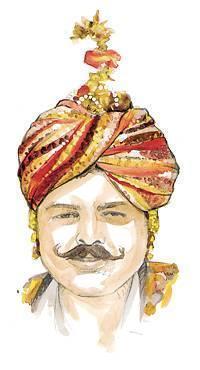Malaysia is a bubbling, bustling melting pot of races and religions where Malays, Indians, Chinese and many other ethnic groups live together in peace and harmony. The mixture of cultures is reflected in the shops, restaurants, shrines, temples, mosques and churches that we visited.
Geographically, Malaysia is as diverse as its culture. Malaysia is divided into 13 states and 3 Federal Territories, separated by the South China Sea with 11 states and 2 federal territories (Kuala Lumpur and Putrajaya) in Peninsular Malaysia and two states and 1 federal territory (Labuan) in East Malaysia.
Malaysia from afar conjures up images of a hot and steamy city (Kuala Lumpur) and dank small towns typical of third world countries half a century ago. Surprised again! While it was a bit hot and steamy everywhere, there were air conditioned malls and offices and lovely shade trees to cut the mid-day sun. As for Third World poor, I was wrong. We experienced fancy long-distance bus rides, excellent roads, good internet connections, great restaurants, safe public drinking water and modern malls. Mostly, though Malaysia impressed me with its people. They were friendly, smiling, courteous and helpful. We dressed conservatively to not give offense with our Western garb, and I never felt unwelcomed by the people.
We had an uneventful 3 hour trip from Singapore to a relatively new marina called Puteri harbor. We found modern docks, great steady electricity and water. We stayed there for just over a month and had the air conditioners humming continually. Although electricity and water were metered, out total bill for 33 days was about $600 US which works out to about $18 per day. We ate out several meals which are inexpensive here too. Our biggest complaint is that the marina was very isolated. The marina van took us shopping twice per week and would shuttle us for free to the local town and to nearby resorts to use their pool, but it would have been nice to walk to places without having to make arrangements. A quick read of the labels on these food items in the supermarket (photo below) tell you that we are not in Kansas anymore!
Tom kept busy by replacing our watermaker membrane, doing some major work on the toilet system and got the dingy motor back in good shape. Kim did her perpetual varnish work on the exterior teak and washing and waxing the topsides. We tried to get some local help, but no willing locals could be found.
One day we took the efficient bus system to Johor Bahru where we met Cam and Nicki from Dreamer and did some clothes shopping. Kim and Emily were fascinated with the colorful Indian clothes that were full of beads and baubles and both now have full outfits. Even Tom now has a fancy turban. The streets were lined with vendors cooking and selling spicy food, colorful flowers and Indian temples.
We had lunch in a Chinese restaurant that had whole cooked ducks hanging in the front window. It was delicious and very inexpensive.
We did manage to escape to Malacca for 3 nights and that was wonderful. We splurged on a hotel right on Jonker Walk which had a King bed, deep tub, big screen TV and frosty air conditioning. I will do a separate blog on Malacca.
Tomorrow morning we start a 5-day, 450 mile trip up the busy Malacca Straights to Langkowi. We will provision there for our crossing of the Indian Ocean.
Tom





















